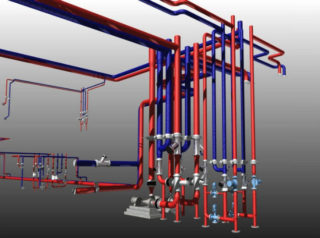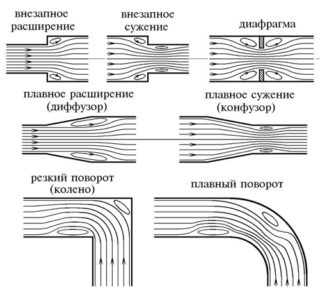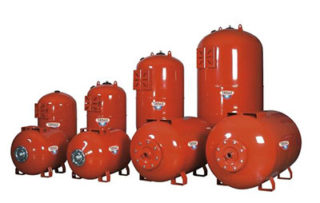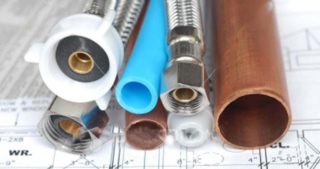Most modern industrial and residential facilities are heated in the winter due to the connection to the centralized heat supply already supplied to them. But there are frequent cases when independent (autonomous) sources are used to heat residential spaces. With their independent installation, you can not do without a preliminary hydraulic calculation of heating carried out for the whole complex as a whole.
Calculation of hydraulics of heating channels
Hydraulic calculation of the heating system usually comes down to the selection of pipe diameters laid in individual sections of the network. When conducting it, the following factors must be taken into account:
- pressure value and its differences in the pipeline at a given coolant circulation speed;
- its estimated expense;
- typical sizes of used tubular products.
When calculating the first of these parameters, it is important to take into account the power of the pumping equipment. It should be enough to overcome the hydraulic resistance of the heating circuits. In this case, the total length of polypropylene pipes is of decisive importance, with an increase in which the overall hydraulic resistance of the systems as a whole increases. Based on the results of the calculation, the indicators necessary for the subsequent installation of the heating system and meeting the requirements of current standards are determined.
Calculation of the parameters of the coolant
Calculation of the coolant is reduced to determining the following indicators:
- the speed of movement of water masses through a pipeline with specified parameters;
- their average temperature;
- media consumption associated with the performance requirements of heating equipment.
When determining all of the above parameters relating directly to the coolant, the hydraulic resistance of the pipe must be taken into account. The presence of shut-off valve elements, which are a serious obstacle to the free movement of the carrier, is also taken into account. This point is especially important for heating systems, which include thermostatic and heat exchangers.
Known formulas for calculating the parameters of the coolant (taking into account hydraulics) are quite complex and inconvenient in practical use. Online calculators use a simplified approach, which allows you to get a result with an error that is acceptable for this method. Nevertheless, before starting the installation, it is important to worry about purchasing a pump with indicators not lower than the calculated ones. Only in this case there is confidence that the requirements for the system according to this criterion are fully met and that it is able to heat the room to comfortable temperatures.
Calculation of system resistance and selection of the circulation pump
When calculating the hydraulic resistance of the heating system, the option of natural circulation of the coolant along its circuits is excluded. Only the case of forced sweeping along the thermal contours of an extensive network of heating pipes is considered. In order for the system to work with a given efficiency, a pump sample is required, which obviously guarantees the necessary pressure. This value is usually represented as the amount of coolant pumped into the selected unit of time.
To determine the total value of the resistance caused by the adhesion of water particles to the inner surfaces of the pipes in the pipelines, the following formula is used: R = 510 4 V 1.9 / d 1.32 (Pa / m). Icon V in this ratio corresponds to the speed of flow. When conducting independent calculations, it is always assumed that this formula is valid only for speeds of not more than 1.25 meters / sec. If the user knows the value of the current consumption of the FGP, it is allowed to use an approximate estimate, which allows to determine the internal section of pipes made of polypropylene.
Upon completion of the basic calculations, you should refer to a special table, which indicates the approximate cross-sections of pipe passages, depending on the figures obtained in the calculation. The most complex and time-consuming procedure is the determination of hydraulic resistance in the following sections of the existing pipeline:
- in the mating zones of its individual elements;
- in valves serving the heating system;
- in gate valves and control devices.
After all the desired parameters relating to the operating characteristics of the coolant are found, go to the determination of all other indicators of the system.
Calculation of the volume of water and the capacity of the expansion tank
To calculate the operating characteristics of the expansion tank, which is mandatory for any closed-type heating system, it will be necessary to deal with the phenomenon of an increase in the volume of liquid in it. This indicator is estimated taking into account changes in the basic performance characteristics, including fluctuations in its temperature. It in this case varies in a very wide range - from room temperature +20 degrees and up to operating values in the range of 50-80 degrees.
It will be possible to calculate the volume of the expansion tank without unnecessary problems, if we use a rough estimate that has been tested in practice. It is based on the experience of operating the equipment, according to which the volume of the expansion tank is approximately one tenth of the total amount of coolant circulating in the system. At the same time, all its elements are taken into account, including heating radiators (batteries), as well as the water jacket of the boiler unit. To determine the exact value of the required indicator, you will need to take the passport of the equipment used and find the items regarding the battery capacity and the working tank of the boiler.
After determining them, the excess coolant in the system is not difficult to find. To do this, first calculate the cross-sectional area of polypropylene pipes, and then the resulting value is multiplied by the length of the pipeline. After summing over all branches of the heating system, the numbers taken from the passport for radiators and the boiler are added to them. One tenth of the total is then counted.
If, for example, the obtained capacity for a household system was about 150 liters, the estimated capacity of the expansion tank will be approximately 15 liters.
Determination of pressure loss in pipes
The resistance of pressure losses in the circuit along which the coolant circulates is determined as their total value for all individual components. The latter include:
- primary loss, denoted by ∆Plk;
- local heat carrier costs (∆Plм);
- pressure drop in special zones called “heat generators” under the designation ∆Ptg;
- losses inside the integrated heat exchange system ∆Pto.
After summing these values, the desired indicator is obtained that characterizes the total hydraulic resistance of the system ∆Pco.
In addition to this generalized method, there are other methods to determine the pressure loss in polypropylene pipes. One of them is based on a comparison of two indicators tied to the beginning and end of the pipeline.In this case, the pressure loss can be calculated by simply subtracting its initial and final values, determined by two pressure gauges.
Another option for calculating the desired indicator is based on the use of a more complex formula that takes into account all factors that affect the characteristics of the heat flow. The ratio given below primarily takes into account the loss of fluid pressure due to the large length of the pipeline.

- h - loss of fluid pressure, in the studied case, measured in meters.
- λ - coefficient of hydraulic resistance (or friction), determined by other calculation methods.
- L - the total length of the served pipeline, which is measured in linear meters.
- D –Internal pipe size, which determines the volume of the coolant flow.
- V - fluid flow rate, measured in standard units (meter per second).
- Symbol g - this is the acceleration of gravity equal to 9.81 m / s2.
Of great interest are losses caused by a high coefficient of hydraulic friction. It depends on the roughness of the inner surfaces of the pipes. The ratios used in this case are valid only for standard round tubular workpieces. The final formula for finding them looks like this:

- V - the speed of movement of water masses, measured in meters / second.
- D - the inner diameter that defines the free space for moving the coolant.
- The coefficient in the denominator indicates the kinematic viscosity of the liquid.
The latter indicator refers to constant values and is located on special tables published in large quantities on the Internet.
When accelerating the flow of coolant, its resistance to movement also increases. At the same time, losses in the heating network increase, the growth of which is not proportional to the pulse that caused this effect (it changes according to the quadratic law). Hence the conclusion: a high fluid flow rate in the pipeline is not beneficial from both a technical and economic point of view.







